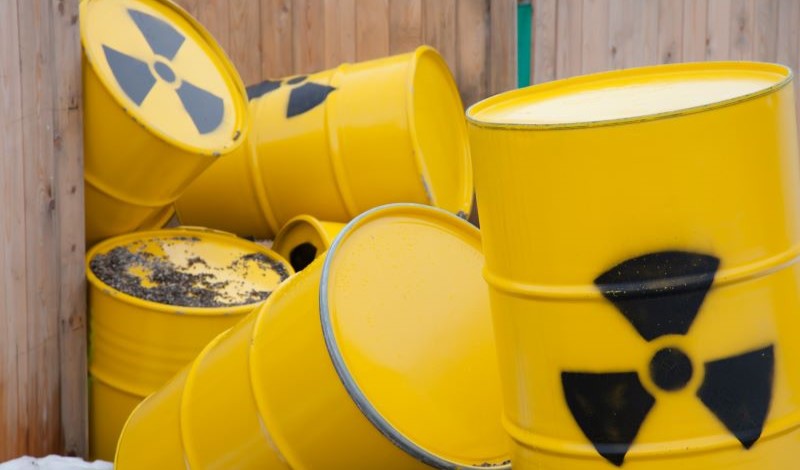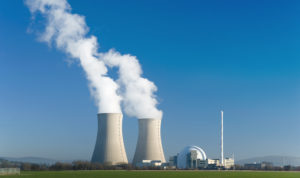
The Supreme Court sides with the Nuclear Regulatory Commission on procedural grounds but signals support for its licensing authority.
At first glance, the U.S. Supreme Court’s recent opinion in Nuclear Regulatory Commission v. Texas is not about the merits of nuclear waste storage. But look closer, and the Justices’ views come into sharper focus.
The Court’s decision turned not on the core dispute—whether the Nuclear Regulatory Commission (NRC) can license private, off‑site nuclear waste storage—but instead on the threshold question of who can seek judicial review of a NRC licensing decision.
Still, those eager to learn how the Justices view the ultimate merits question should not be disappointed. Justice Brett Kavanaugh devoted nearly a third of his majority opinion to non-binding dicta defending the NRC’s authority to license storage of spent nuclear fuel, one type of radioactive waste generated by nuclear power plants. And Justice Neil Gorsuch focused most of his dissent rebutting that dicta.
But Justice Gorsuch’s dissent’s most resonant tune is on neither the question of judicial review nor the question of the NRC’s licensing authority. On both fronts, the majority had the more convincing position, concluding that federal law both barred review in this case and authorizes NRC permitting of off-site spent-fuel facilities. Rather, Justice Gorsuch struck his most persuasive chord in criticizing the NRC’s stringent standards for allowing public intervention in its licensing proceedings. Allowing an agency to set such a high bar for public participation, Justice Gorsuch warned, is like “letting the fox guard the henhouse.”
Both opinions began with a brief history of spent-fuel storage. In the 1950s, the U.S. Congress passed the Atomic Energy Act under the assumption that plants could reprocess spent nuclear fuel, making long-term storage unnecessary. But by the 1970s, the reprocessing industry had collapsed. In the 1980s, Congress tried to settle the question for millennia: It selected Nevada’s Yucca Mountain as the permanent home for the country’s nuclear waste.
But the Yucca Mountain Nuclear Waste Repository never materialized—the result of political setbacks and funding lapses. As a stopgap, Congress allowed the NRC to license plants to store spent nuclear fuel on-site or, as relevant in this case, at off-site facilities. A private company, Interim Storage Partners, proposed one such facility. Intended to occupy a tract in the Permian Basin near the Texas–New Mexico border, it would have been the first true purpose-built off-site storage facility.
After a multi-year, multi-stage process, ISP obtained final approval from the NRC. In the middle of that lengthy review, Fasken Land & Minerals, a private business located near the proposed facility, sought to intervene in the licensing proceeding. The NRC rejected Fasken’s request pursuant to its internal procedural rules, which require that potential intervenors demonstrate a genuine dispute with the applicant.
The U.S. Court of Appeals for the D.C. Circuit affirmed the agency’s decision, and Fasken decided not to seek review by the Supreme Court. Instead, Fasken—joined by Texas—successfully petitioned the U.S. Court of Appeals for the Fifth Circuit to vacate ISP’s license and hold the NRC lacks the authority to permit off-site spent-fuel storage.
In a 6–3 decision, the Supreme Court reversed, holding that the Hobbs Act—a general federal statute that governs judicial review of certain agency actions, including NRC licensing decisions—barred Texas and Fasken from seeking judicial review of NRC’s grant of a license to ISP. En route to that conclusion, the Court made a series of formalist moves: The majority explained that an entity seeking to challenge an NRC licensing decision must be a “party aggrieved” under the Hobbs Act. And under the Atomic Energy Act, a “party” means only actual participants in the licensing process—the applicant or successful intervenors. Here, however, Texas never attempted to intervene, and Fasken’s attempt was unsuccessful. So neither party could sue the NRC, the Court held.
In doing so, the Court deferred to the NRC’s internal procedural rules and shielded its licensing decisions from collateral attacks.
In his dissent, Justice Gorsuch faulted the majority’s narrow reading as a mechanistic box‑checking exercise. Indeed, Justice Gorsuch contended, Texas and Fasken were “aggrieved” by the development of a major nuclear waste facility in the Permian Basin. And certainly, he continued, Texas and Fasken had done enough to qualify as “parties” to the licensing proceeding, including participating in an “essential component” of the agency activity: the NRC’s environmental review of ISP’s proposal.
The majority rejected this “lowest common denominator” approach, whereby any participation in the NRC’s multi-stage licensing review would confer party status. The Court instead opted for a strict construction of the AEA, reasoning that even if the NRC specifically invited certain entities to submit comments—as happened here—those entities do not automatically become parties. The Court drew an analogy to standard litigation: A person who files an amicus (“friend of the court”) brief does not become a party to a case.
But Justice Gorsuch offered his own formalist takedown of that formalist requirement. The AEA, he explained, directs the NRC to “grant a hearing” to and “admit” as a party any person “whose interest may be affected by” a licensing proceeding. In Justice Gorsuch’s view, the statute does not limit party status only to those who participate in a formal hearing—nor does it require a hearing in every proceeding. On that reading, entities could gain party status at other stages of the agency’s multi-layered licensing process.
The majority, however, countered that the statute speaks of admitting parties “to such proceeding”—a phrase it understood to mean the overall licensing proceeding, not some piecemeal or isolated component. The dissent also suggested that the hearing provision is not the sole pathway to party status under the AEA, but it offered little clarity on what alternative mechanisms would satisfy the Hobbs Act’s requirement—or how to limit them.
The dissent’s true target, according to the majority, is the NRC’s internal standards for intervention. Those standards—which require potential intervenors to raise a “contention” alleging a dispute with the licensee—have been on the books for nearly four decades. But the AEA seems to suggest a laxer standard: Anyone who “may be affected” by a proposed spent-fuel facility may intervene. Here, the NRC not only rejected Fasken’s application but, indeed, turned down all requests to intervene. The result, the dissent stressed, is an “echo chamber involving agency staff and ISP.
“Fox,” Justice Gorsuch concluded, “meet henhouse.”
Still, the majority correctly replied that Fasken lacked the proper procedural posture to challenge those intervention standards in this case. The Court emphasized that Fasken could have appealed the D.C. Circuit’s decision to affirm the adverse intervention decision. Instead, it launched a collateral attack in the Fifth Circuit.
Looking ahead, however, Justice Gorsuch suggested that a future litigant should directly challenge the NRC’s intervention rules. He telegraphed one possible vulnerability: The D.C. Circuit’s 1990 decision upholding those rules relied on the since-disavowed doctrine of deference to reasonable agency interpretations of statutes.
In any event, on the ultimate merits question, the majority more than telegraphed its views. The Court observed that “history and precedent offer significant support for the NRC’s longstanding interpretation” that it can license off-site storage of spent nuclear fuel. That history includes a 1982 law in which, the majority argued, Congress left undisturbed preexisting NRC regulations authorizing such storage. And that precedent includes the D.C. Circuit’s 2004 decision upholding those regulations. Importantly, the Court noted, neither Fasken nor Texas contested before the NRC its authority to license off-site storage.
For now, NRC v. Texas keeps the fight squarely procedural—but with the substantive battlefield perhaps just ahead. With six Justices joining the merits dicta in this case, that headcount is unlikely to change if the issue returns to the Court. In the policy vacuum left by the stalled Yucca Mountain repository, licensing off-site storage facilities seems poised to continue—even if the Court eventually lowers the bar for intervention in future NRC proceedings.
This essay is part of a series, titled “The Supreme Court’s 2024-2025 Regulatory Term.”




